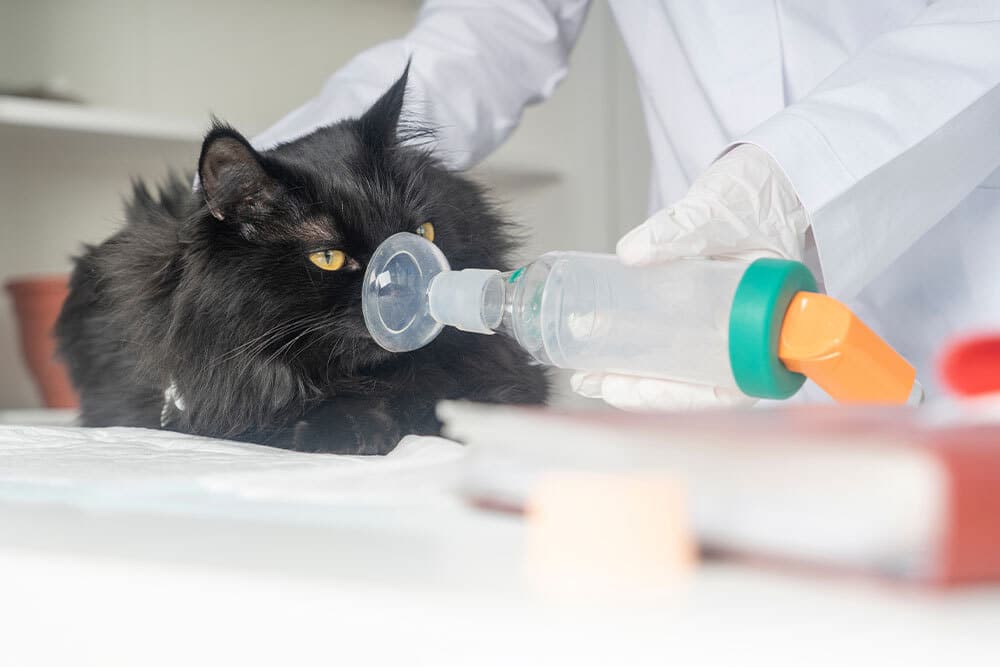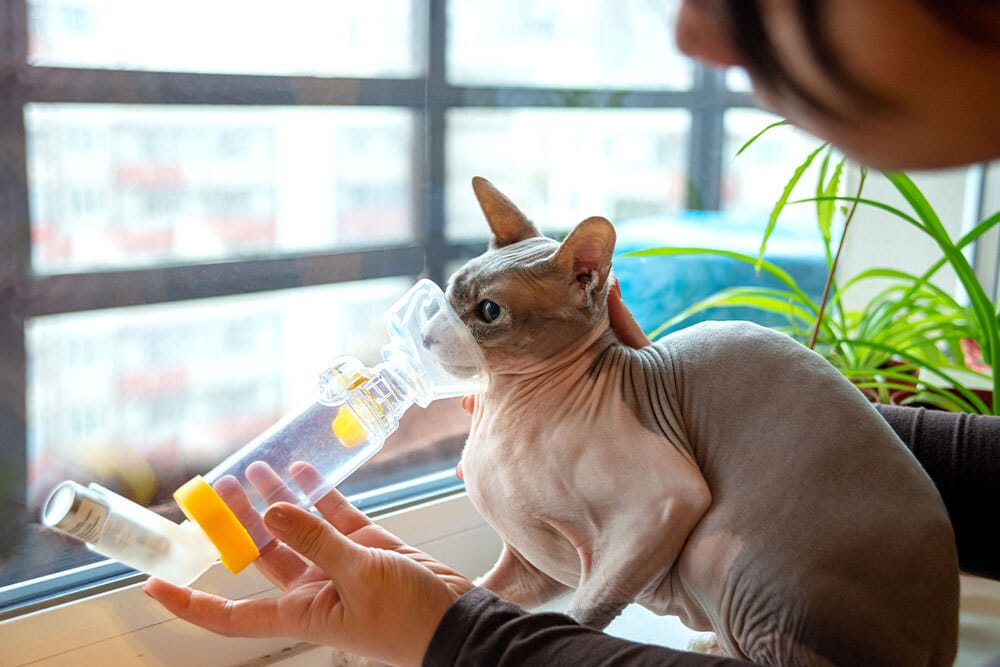Breathe Easy: Understanding and Managing Your Cat’s Asthma
Feline asthma is more than just an occasional cough—it’s a chronic, potentially serious respiratory condition that can impact every breath your cat takes. At South Shores Pet Clinic in San Pedro, California, we’re here to help you understand the signs, causes, and treatment options so your cat can breathe easier and live more comfortably.
If you’ve noticed your cat coughing, wheezing, or breathing abnormally, you’re right to be concerned. But the good news is that with the right care, most cats with asthma live long, healthy lives.
What Is Feline Asthma?
A Closer Look at Feline Asthma
Feline asthma is a chronic inflammatory disease of the small airways in the lungs. When triggered, these airways become inflamed and narrowed, making it difficult for your cat to breathe. While the exact cause is often unknown, asthma is believed to be immune-mediated, meaning the body overreacts to harmless substances in the environment.
Feline asthma is similar to asthma in humans and is estimated to affect about 1-5% of cats. It tends to appear in cats between the ages of two and eight and can be worsened by environmental triggers.
Learn more from Cornell Feline Health Center
What Causes Asthma in Cats?
Understanding what might trigger your cat’s asthma can help you minimize flare-ups and improve their breathing comfort.
Genetic and Immune System Factors
- Cats may have a genetic predisposition to allergic airway disease.
- Immune overreactions can cause chronic inflammation in response to environmental particles.
Environmental Triggers
- Household dust, pollen, mold, and mildew
- Cigarette smoke, scented candles, air fresheners
- Aerosols, cleaners, and strong-smelling chemicals
- Cold air, stress, or changes in routine
Infections and Allergies
- Respiratory infections, such as those caused by viruses or bacteria, can exacerbate asthma symptoms or act as triggers.
- Cats with pre-existing allergies may be more likely to develop asthma.
Read about Feline Upper Respiratory Infections – ASPCA Pro
Recognizing the Signs of Feline Asthma
Asthma symptoms can range from subtle to severe. Early recognition is key.
Common Symptoms
- Coughing (often mistaken for hairballs)
- Wheezing or high-pitched breathing sounds
- Open-mouth breathing
- Rapid, shallow, or labored breathing
- Episodes of panting or gasping
- Lethargy or reluctance to play
- Blue-tinged gums (a medical emergency)
These symptoms often worsen after activity, stress, or exposure to irritants.
Read more on respiratory distress – AAHA
Diagnosing Asthma in Cats
A proper diagnosis is essential to rule out other respiratory or cardiac conditions that can mimic asthma, such as heartworm disease, bronchitis, or heart failure.
Veterinary Examination
- Thorough physical examination and detailed medical history
- Auscultation (listening to the lungs) to detect wheezing, crackling, or restricted airflow
Diagnostic Tools
- Chest X-rays: Reveal patterns of lung inflammation or hyperinflation
- Blood tests: Identify infection, inflammation, or allergens
- Fecal testing: Rule out lungworms
- Allergy tests: Detect environmental allergens
- Bronchoscopy and cytology: Examine and collect airway cells for analysis
How Is Feline Asthma Treated?
Asthma is a lifelong condition that cannot be cured, but it can be successfully managed with the right treatment plan.
Medications
- Inhaled corticosteroids: Reduce inflammation directly in the lungs without widespread side effects
- Bronchodilators: Open airways during an asthma attack
- Oral steroids: Used for severe or emergency cases when inhalers aren’t enough
Learn how inhalers work with the AeroKat – Trudell Animal Health
Environmental Control
- Eliminate triggers such as smoking, scented products, and dusty litter
- Use HEPA air purifiers and keep your home clean and ventilated
- Avoid aerosol sprays and use pet-safe cleaning products
Regular Monitoring and Veterinary Visits
- Adjust medications based on your cat’s symptoms and lung function
- Evaluate new symptoms promptly to avoid complications
- Explore preventive care at South Shores Pet Clinic
Lifestyle and Diet
- Maintain a healthy weight, as obesity can worsen asthma
- Discuss anti-inflammatory diets or supplements with your vet

Preventing Asthma Attacks: Practical Tips for Pet Owners
Everyday Prevention
- Vacuum frequently using HEPA filters
- Use low-dust, unscented litter
- Avoid smoking indoors
- Keep windows closed during high pollen days
Managing Weight and Stress
- Help your cat stay active with gentle play
- Minimize stressful changes in environment or routine
Know What an Emergency Looks Like
- Gasping, open-mouth breathing, or blue gums are emergencies
- Contact a veterinarian immediately if your cat is struggling to breathe
Prognosis for Cats with Asthma
With proper diagnosis and management, most cats with asthma lead long, happy lives. However, asthma is chronic and progressive, so ongoing monitoring is essential. Treatment plans often need to be adjusted over time, especially as symptoms or triggers change.
Your Partner in Feline Respiratory Health
At South Shores Pet Clinic, we believe that informed, proactive care makes all the difference. If you’ve noticed signs of asthma in your cat—or just want peace of mind—we’re here to help with compassionate, expert care.
Contact us today to schedule an appointment. Together, we’ll help your cat breathe easy again.
Knowledge is the first step. Proactive care is the next. Let’s help your cat breathe better, together.







Leave A Comment